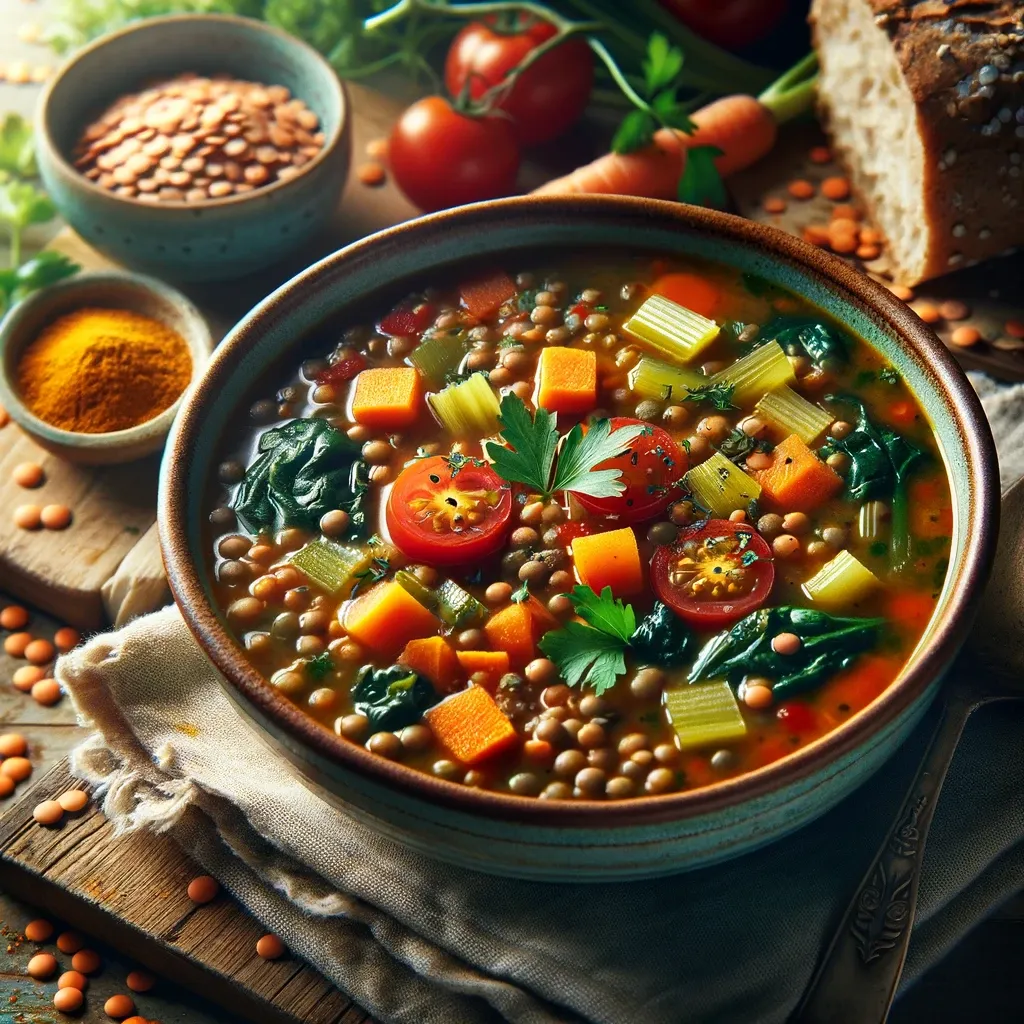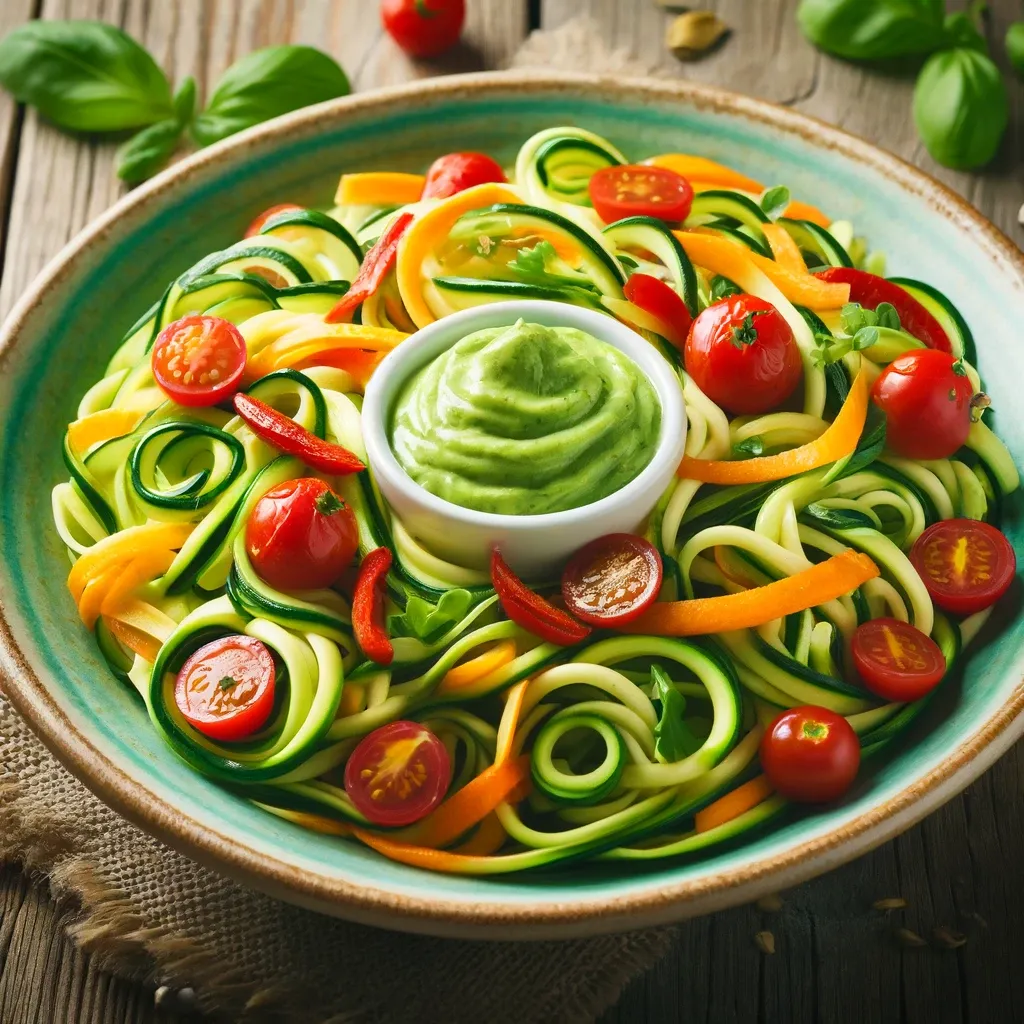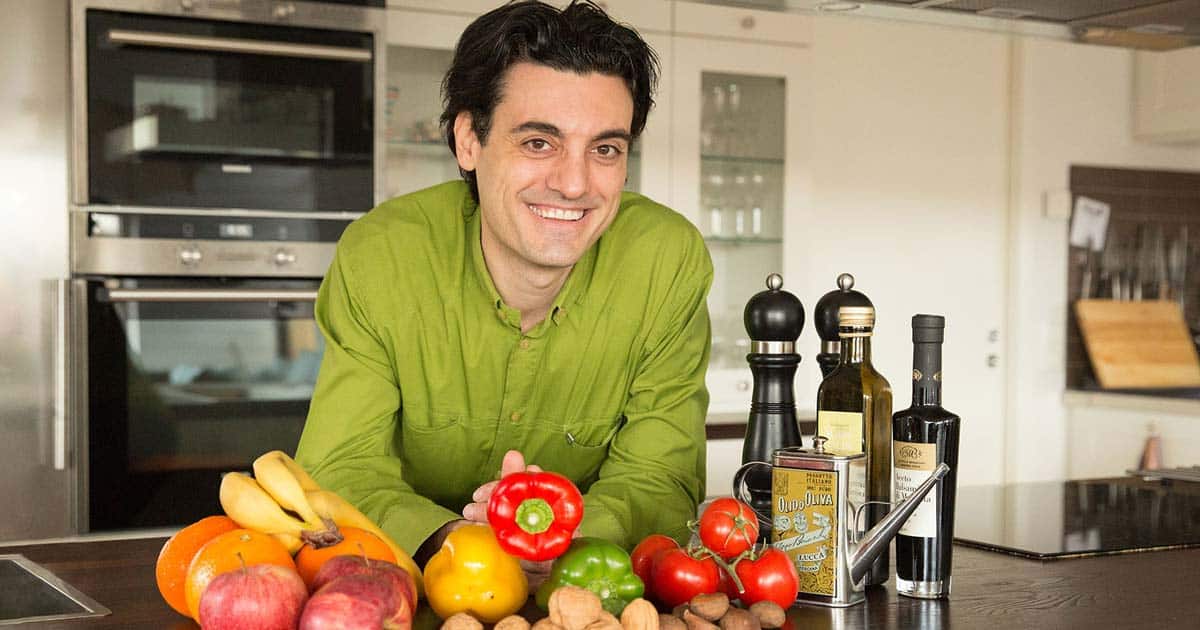Seeking Relief from Fibromyalgia Through Diet: A Hopeful Path in a Sea of Doubts
Fibromyalgia (FM) is a complicated condition that causes long-lasting pain all over the body, along with tiredness, trouble sleeping, and fuzzy thinking. It affects a lot of people around the world, and it can really mess up your life. Doctors still don't agree on what causes FM or how to treat it.

By Gianluca Tognon, PhD
Fibromyalgia (FM) is a complicated condition that causes long-lasting pain all over the body, along with tiredness, trouble sleeping, and fuzzy thinking. It affects a lot of people around the world, and it can really mess up your life. Doctors still don't agree on what causes FM or how to treat it.
While scientists try to figure out more about this condition, patients and doctors are trying different things, like changing what they eat, to reduce the burden associated with the symptoms that characterise this condition.
The Quest for Dietary Solutions
Seven recent clinical trials (references at the end of this article) investigated the potential benefits of different dietary approaches in the management of FM. These studies explored the effects of gluten-free, raw vegetarian, low FODMAP (Fermentable Oligosaccharides, Disaccharides, Monosaccharides, and Polyols), hypocaloric, and monosodium glutamate- and aspartame-free diets on FM symptoms.
The results were encouraging, with five out of the seven studies reporting improvements in patient-reported outcomes such as pain and functional impairment. Some studies also observed positive changes in fatigue, sleep quality, depression, anxiety, quality of life, gastrointestinal symptoms, and inflammatory biomarkers.
Dietary Interventions Under the Microscope:
As fibromyalgia (FM) is a complex and multifactorial condition, there is no single dietary recommendation that can suit all patients. However, some evidence suggests that certain dietary interventions may help to alleviate some of the symptoms and improve the quality of life of people with FM.
Let’s go through some of the most recent and relevant studies on the topic and highlight their main findings:
- Gluten-Free Diet: a recent intervention study found no significant differences in FM-related pain or gastrointestinal symptoms between a gluten-free and hypocaloric diet.
- Low FODMAP Diet: A four-week intervention with a low FODMAP diet led to a significant reduction in gastric pain and intestinal changes, with a 50% reduction in symptoms.
- Vegetarian Diet: Two studies explored the effects of a vegetarian diet on FM. One reported a significant reduction in the Fibromyalgia Impact Questionnaire Revised (FIQR) score after seven months, while the other found improved autonomy and reduced morning stiffness compared to a control group.
- Raw Vegetarian Diet: Similar to the vegetarian diet studies, participants following a raw vegetarian diet experienced improvements in FIQR scores, vitality, mobility, emotional health, mental health, and overall quality of life after seven months.
- Hypocaloric Diet: A hypocaloric diet intervention resulted in significant improvements in quality of life, sleep quality, anxiety, and depression. Additionally, reductions in inflammatory markers were observed after six months, suggesting potential anti-inflammatory effects of weight reduction.
Exercising Caution
Despite these promising findings, it is crucial to note that the above studies had quite some limitations in terms of scientific quality, including poor statistical analyses, high risk of bias, and low to very low certainty of evidence. As such, the results I described above studies should be taken with a grain of salt, and definitive conclusions cannot be drawn yet. The fact that promising effects were observed with different types of diets indicates that the beneficial effects on fibromyalgia are probably mediated by a weight reduction consequent to adopting a healthier regime.
The Way Forward
There is a need for well-designed, high-quality studies to further investigate the effects of dietary interventions on FM symptoms and pathophysiology. Collaborative efforts between researchers, healthcare professionals, and patients are essential to explore the potential benefits of dietary modifications in the management of this complex condition.
While dietary approaches have shown promising results in alleviating FM symptoms, more research is needed to establish definitive guidelines. FM patients should consult with their healthcare providers before making any significant dietary changes to ensure a comprehensive and personalized approach to managing their condition.
With ongoing research and a multidisciplinary approach, the quest to unravel the complexities of FM and identify effective treatment strategies continues, offering hope for improved quality of life for those affected by this debilitating syndrome.
More food for thought
While we anticipate more quality research to emerge, here are also some recipes that align well with the message of this article:
Low-FODMAP Chicken Stir-Fry

Ingredients: 2 chicken breasts (thinly sliced), 1 red bell pepper (sliced), 1 green bell pepper (sliced), 1 cup sliced carrots, 1 cup sliced zucchini, 1 cup sliced bok choy, 2 tablespoons garlic-infused olive oil, 2 tablespoons low-sodium soy sauce (ensure it's gluten-free if needed), 1 tablespoon maple syrup, 1 tablespoon rice vinegar, 1 teaspoon grated ginger, Cooked rice or quinoa for serving.
Directions:
In a small bowl, mix together the soy sauce, maple syrup, rice vinegar, and grated ginger to make the sauce. Set aside. Heat the garlic-infused olive oil in a large skillet or wok over medium-high heat. Add the sliced chicken breasts to the skillet and cook until browned and cooked through, about 5-7 minutes.
Remove the chicken from the skillet and set aside. In the same skillet, add the sliced bell peppers, carrots, and zucchini. Stir-fry for 3-4 minutes until the vegetables are slightly tender. Add the sliced bok choy to the skillet and continue to stir-fry for an additional 2 minutes.
Return the cooked chicken to the skillet and pour the sauce over the chicken and vegetables. Stir well to coat everything evenly in the sauce. Cook for another 2-3 minutes until the sauce has thickened slightly and everything is heated through. Serve the chicken stir-fry over cooked rice or quinoa and enjoy!
Hearty Lentil and Vegetable Soup

Ingredients: 1 cup dried green or brown lentils (rinsed and drained), 2 tablespoons olive oil, 1 onion (diced), 2 cloves garlic (minced), 2 carrots (diced), 2 celery stalks (diced), 1 can (14 oz) diced tomatoes (undrained), 6 cups vegetable broth, 1 teaspoon dried thyme, 1 teaspoon dried oregano, Salt and pepper to taste, 2 cups fresh spinach (chopped), Fresh parsley, chopped (for garnish), Lemon wedges (optional, for serving).
Directions:
In a large pot, heat the olive oil over medium heat. Add the diced onion and garlic, and sauté until softened, about 3-4 minutes. Add the diced carrots and celery to the pot, and cook for another 5 minutes, stirring occasionally. Stir in the dried lentils, diced tomatoes (with their juices), vegetable broth, dried thyme, and dried oregano. Bring the soup to a boil.
Once boiling, reduce the heat to low, cover the pot, and let the soup simmer for about 25-30 minutes, or until the lentils are tender. Season the soup with salt and pepper to taste. Adjust the seasoning as needed. Stir in the chopped spinach and let it wilt in the hot soup for a couple of minutes. Once the spinach has wilted, remove the soup from heat.
Taste and adjust seasoning if necessary. Ladle the lentil and vegetable soup into bowls. Garnish with chopped fresh parsley and serve with lemon wedges on the side, if desired. Enjoy your comforting and nutritious Lentil and Vegetable Soup!
Raw Vegan Zucchini Noodle Salad with Creamy Avocado Dressing

Ingredients for the salad: 2 medium zucchinis (spiralized into noodles), 1 cup cherry tomatoes (halved), 1/2 cucumber (thinly sliced), 1/4 cup red onion (thinly sliced), 1/4 cup fresh basil leaves (torn), 1/4 cup toasted pine nuts (optional, for garnish), Salt and pepper to taste.
Ingredients for the dressing: 1 ripe avocado, 1/4 cup fresh cilantro leaves, 2 tablespoons fresh lemon juice, 2 tablespoons extra virgin olive oil, 1 clove garlic (minced), 1/4 teaspoon cumin, Salt and pepper to taste, Water (if needed to thin the dressing).
Directions:
In a large mixing bowl, combine the zucchini noodles, cherry tomatoes, cucumber slices, red onion slices, and torn basil leaves. Toss gently to combine.
To make the creamy avocado dressing, scoop the flesh of the avocado into a blender or food processor. Add the fresh cilantro leaves, lemon juice, olive oil, minced garlic, cumin, salt, and pepper. Blend until smooth and creamy, adding water as needed to achieve your desired consistency. The dressing should be thick but pourable. Taste the dressing and adjust the seasoning if necessary, adding more salt, pepper, or lemon juice to taste.
Pour the creamy avocado dressing over the zucchini noodle salad and toss until everything is evenly coated in the dressing. Transfer the salad to serving plates or bowls. Sprinkle toasted pine nuts over the top for an extra crunch and nutty flavor, if desired.
Serve immediately and enjoy your vibrant and nutritious Raw Vegan Zucchini Noodle Salad with Creamy Avocado Dressing!
Low-calorie Stuffed Bell Peppers

Ingredients: 4 large bell peppers (any color), 1 cup lean ground turkey or chicken, 1 small onion (finely chopped), 2 cloves garlic (minced), 1 cup diced tomatoes (fresh or canned), 1 cup chopped spinach, 1/2 cup chicken or vegetable broth, 1 teaspoon dried oregano, 1 teaspoon dried basil, Salt and pepper to taste.
Optional toppings: grated Parmesan cheese, chopped fresh parsley.
Directions:
Preheat your oven to 375°F (190°C). Lightly grease a baking dish and set aside. Cut the tops off the bell peppers and remove the seeds and membranes from the inside. Place the bell peppers upright in the prepared baking dish and set aside.
In a skillet over medium heat, cook the ground turkey or chicken until browned and cooked through, breaking it apart with a spoon as it cooks. Drain any excess fat, if necessary. Add the chopped onion and minced garlic to the skillet with the cooked turkey or chicken. Cook for 2-3 minutes, or until the onion is translucent and fragrant.
Stir in the diced tomatoes, chopped spinach, chicken or vegetable broth, dried oregano, and dried basil. Season with salt and pepper to taste. Cook for an additional 5 minutes, allowing the flavors to meld together. Spoon the turkey or chicken mixture into the hollowed-out bell peppers, dividing it evenly among them. Press the filling down gently to pack it in.
Cover the baking dish with foil and bake in the preheated oven for 25-30 minutes, or until the bell peppers are tender. Remove the foil from the baking dish and sprinkle the stuffed bell peppers with grated Parmesan cheese, if desired. Return to the oven and bake for an additional 5 minutes, or until the cheese is melted and bubbly. Remove the stuffed bell peppers from the oven and let them cool for a few minutes before serving.
Garnish with chopped fresh parsley, if desired, and serve hot.
References
Slim M, Calandre EP, Garcia-Leiva JM, et al. The effects of a gluten-free diet versus a hypocaloric diet among patients with fibromyalgia experiencing gluten sensi- tivity-like symptoms: a pilot, open-label randomized clinical trial. J Clin Gastroenterol. 2017;51:500–507.
Marum AP, Moreira C, Saraiva F, et al. A low ferment- able oligo-di-mono saccharides and polyols (FODMAP) diet reduced pain and improved daily life in fibromyalgia patients. Scand J Pain. 2016;13: 166–172.
Kaartinen K, Lammi K, Hypen M, et al. Vegan diet alle- viates fibromyalgia symptoms. Scand J Rheumatol. 2000;29:308–313.
Donaldson MS, Speight N, Loomis S. Fibromyalgia syndrome improved using a mostly raw vegetarian diet: an observational study. BMC Complem Altern Med. 2001;1:7.
Senna MK, Sallam RA, Ashour HS, et al. Effect of weight reduction on the quality of life in obese patients with fibromyalgia syndrome: a randomized controlled trial. Clin Rheumatol. 2012;31:1591–1597.
Shapiro JR, Anderson DA, Danoff-Burg S. A pilot study of the effects of behavioral weight loss treatment on fibromyalgia symptoms. J Psychosom Res. 2005;59: 275–282.

Gianluca Tognon is an associate professor in public health at the University of Skövde (Sweden) and the founder of the consulting company “The Food Scientist AB.
Gianluca is an expert in epidemiology, public health, statistical methods, nutrition, and food science. As a trained biologist with a Ph.D. in nutrition, Gianluca spent more than 15 years researching public health and nutritional epidemiology to understand the problems connected to unhealthy diets.
Gianluca has consulted private companies, schools, organisations, and hundreds of private individuals who needed help with diet and health. He has presented at several conferences and events in Europe and the USA.
Gianluca is also a board member of Paincation.
More information about Gianluca is available on his website:




